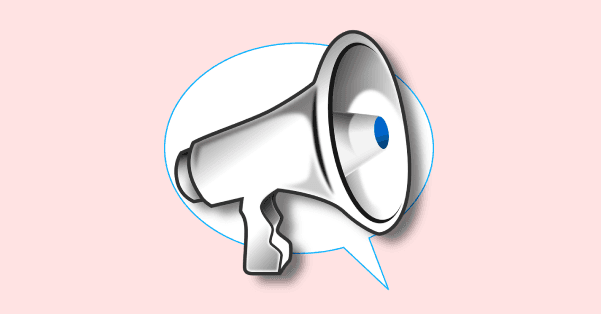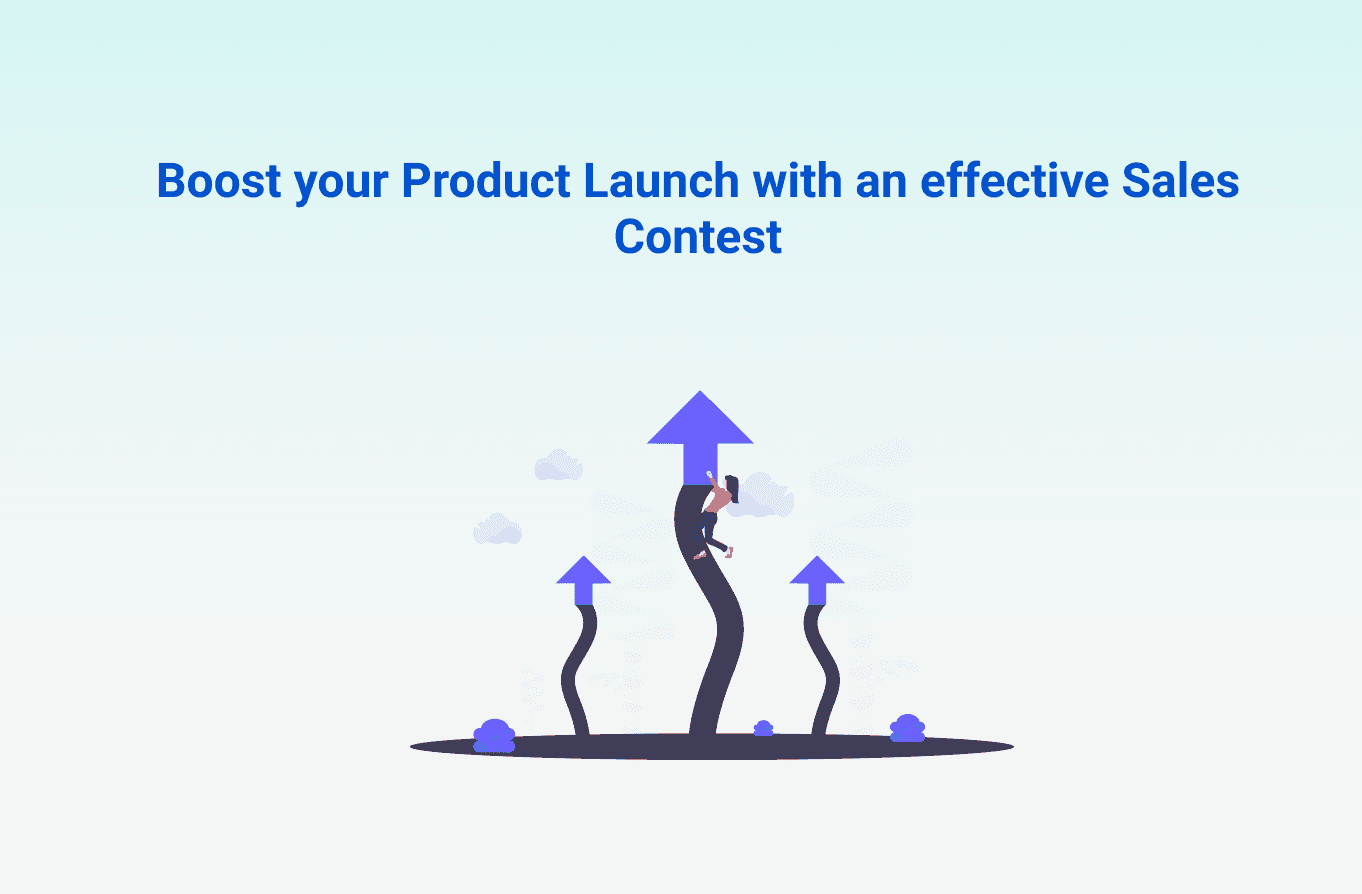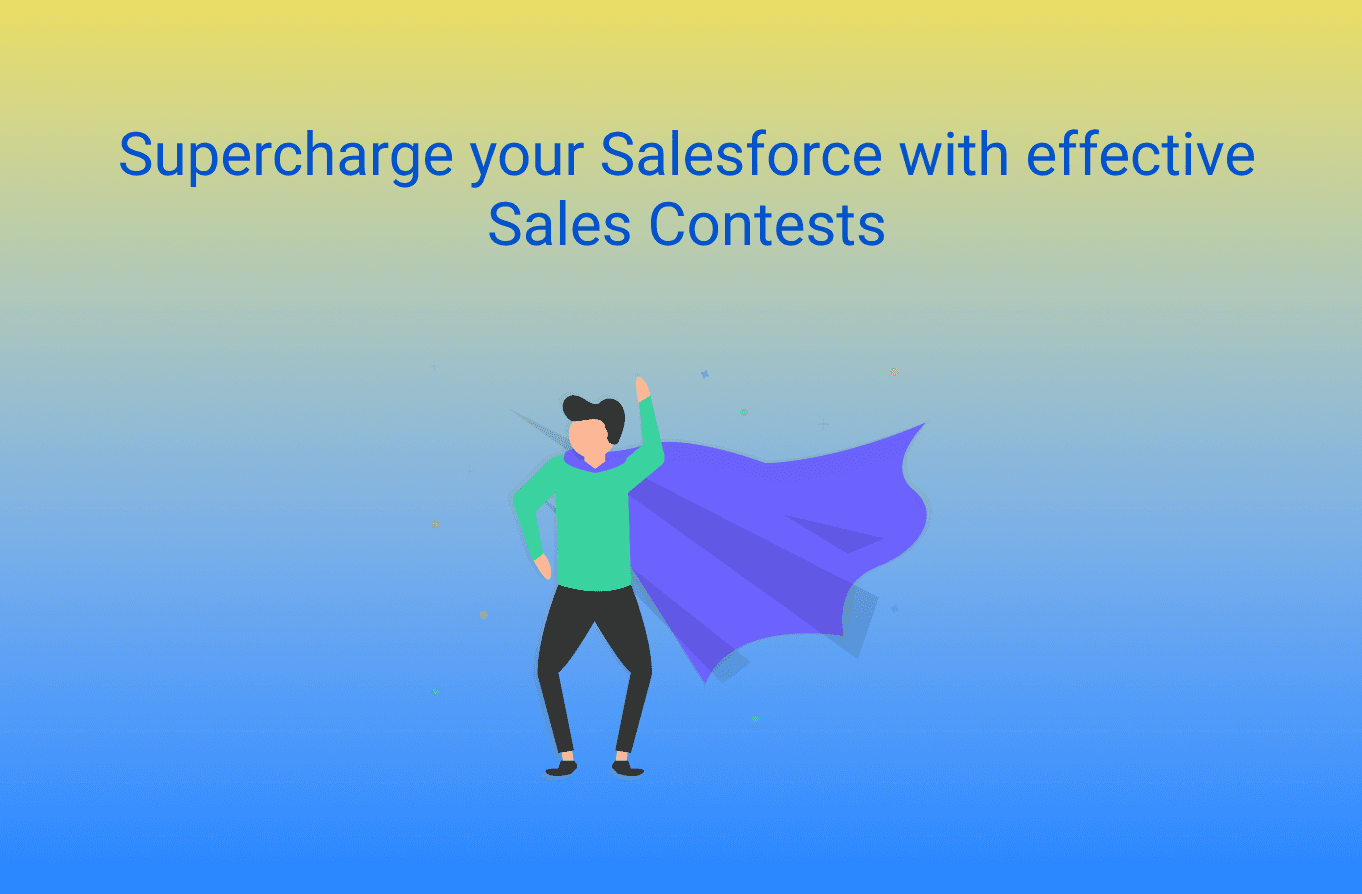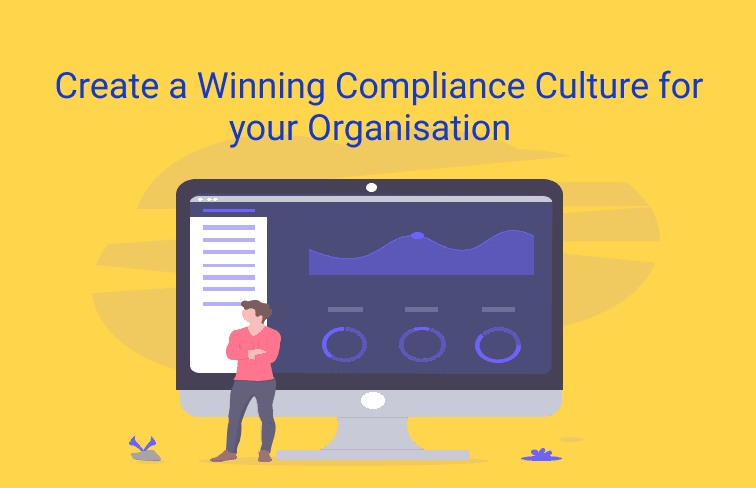One of the most valuable skills that a salesperson can have is the knowledge of how to sell anything to anyone. Salespeople today are the primary differentiators in all purchases. As products and services become increasingly commoditized, buyers are aware that they can get a similar offering from any other company.
But what they can’t get from just any vendor is the same pleasant buying experience that is created by your company’s sales rep.
This means salespeople have almost complete control of their own destinies. So, despite of having,
A crummy product line
A bad month
Being forced to work completely remotely
You can succeed in your sales game by making yourself more buyer-centric and buyer-friendly.
Regardless of what industry you’re in, what type of product you sell and what kind of customer base you sell into, there are a few simple techniques that can be applied to any sales situation. These techniques can help you sell more to just about anybody.
In this post, I’ll provide you with these great sales techniques for selling anything to anyone
1. Do your Research
Research is the key to successful sales today. If you want your prospects to give you their time to learn about your product, you will need to invest your time learning about them first. In the age of social media, there’s no excuse to call or email a buyer with no knowledge of what they do and what they care about.
It’s not a huge and time-taking task to research your prospect before contacting them. Depending on your particular sales cycle, as little as five or 10 minutes per prospect might be enough.
Below are some places to conduct research on your prospects before you attempt to engage them in conversation:
Twitter (prospect's individual account and company's account)
Company's press releases page
Competitors' press releases pages
Blogs
Company financial statements
Google (prospect and company)
2. Understand your customers’ needs and motivations
Whatever it is that you are selling, the most important part of salesmanship is understanding the needs of your customer and figuring out how to meet them.
Try finding answers to these questions:
Why should people care about what you’re selling?
How is your product or service providing value to them?
Pay attention to what’s driving your potential client to take your meeting in the first place and address that in your pitch.
In almost every sales scenario, a salesperson who focuses on customer service and how a product is able to meet its customer’s needs will be much more successful than a salesperson who focuses on the features and specifications of the product itself.
Perhaps your customer has pain points that your product is able to alleviate, or perhaps they have desires that it is able to fulfill.
Once you determine the needs of your target customer and how your product is able to meet them, centering your sales pitch around meeting those needs is the best way by far to close a sale.
3. Know who to sell to
You need to carefully analyze every prospect and target the right people while selling your products or services. Otherwise, you are merely wasting your time on the wrong people and this not going to help you in any way.
For example: If you’re selling a widget that costs $50K, don’t try to sell it to the guy whose widget budget is $2k. A common mistake salespeople make is trying to sell to anyone and everyone. Make sure whatever you’re selling fulfills your potential client’s needs and is realistic for them. This way, you’re much more likely to get that sale!
4. Keep your sales pitch simple
In an attempt to sound more knowledgeable don’t overcomplicate your sales pitch. The mark of true knowledge is to simplify everything that you know and present it in a way that even an average person would understand.
Keep your pitch simple. If it’s an elevator pitch, then it has to be under 30 seconds. Practice your elevator pitch and aim for perfection.
The key to crafting a captivating sales pitch is to think about the person you’re pitching to. Make your approach about their needs. Put yourself in their shoes and think about how they’ll feel after the pitch/meeting. Craft your pitch accordingly.
5. Learn to sell yourself
Apart from your product and service, remember that you are also selling yourself as a trusted representative of your company. Whether you’re cold calling a prospect or have spoken with them before, it’s important to keep in mind that before a person is going to be willing to hand over their hard-earned money to you, they’ve got to like you, the salesperson, just as much as they like the product or service that you are selling.
When you get in contact with a prospective customer, make sure to strike up a casual conversation. Take a little time to know your customer and let them get to know you.
Tell them a quick story, make them laugh, and overall simply let your personality shine.
If you can make your customer see you as a person and perhaps even as a friend rather than just someone who is trying to sell something to them, they’ll be far more inclined to buy something from you.
6. Make it about the customer
Did you ever talk to someone (maybe a friend or a family member) who monopolizes every conversation? Probably they aren’t your favorite people to talk to, isn’t it? Now add a bragging tone to that and they become especially intolerable.
Just like the way you don’t like listening to such people, your buyers wouldn’t like listening to salespeople who talk at length about their company or offerings. Because what you perceive as informative and interesting, your might prospects perceive as obnoxious and irrelevant.
So an important principle that you need to incorporate into your sales practice is to always make everything that you do about your buyer. Every email that you write, voicemail that you leave, demo that you give, and meeting that you attend should place the focus squarely on the buyer. Ask yourself constantly: "What is relevant to this particular prospect?" and then customize your communication accordingly.
7. Ask, Listen and Repeat
I understand that you’ve done your research and learned most things about your prospect. Like,
The history of the prospect
Their purchasing capabilities
Their pain points etc
With all this information at hand, it is easy to be overcome by passion and pitch what you think is best for the prospect. But don’t that. Here’s why. If you do that, you risk coming across as pushy. You make them feel like the meeting is all about you and not about them. You need to make sure that you give the utmost importance to the people across the table. It’s about their needs and goals.
So ask.
Ask how you can help them
Ask what their goals are
Ask what their concerns are
Then listen. Ask leading questions and listen some more. Keep listening until you have a pretty clear understanding of the whole picture.
This doesn’t mean that you hound them with questions. Sometimes you listen a little, give a little, and go back and forth for a few meetings. That's fine. You do want to be flexible and you don't want to be pushy. Just see if you can find a way to get them to speak first. Information is power.
Also, listen for what really and truly matters to them. They might say a lot, but if you really listen, you'll discern
What's really in it for them,
What motivates them,
And what obstacles you have to overcome.
8. Contribute first and then try selling
Don't rush to close the sale. If you push the sale too aggressively, you run the risk of angering the prospect or scaring them away. Instead, offer your help in the way you think would be most valuable. Make sure that you give enough reasons for the client to reach the purchase decision by themselves. Not sure where you can be of service? Ask.
Maybe you can send them a breakdown of the latest features of your product or send them a piece of content that speaks to their needs. Perhaps you can draw on your industry expertise and speak about industry-wide trends that the buyer might not be aware of.
Pro tip: Save templates of common questions you receive from buyers, so you can quickly follow up with a relevant message.
Make sure that you position yourself as an advisor who wants to help, rather than a salesperson who is thirsty to sell. This approach helps you to find a more receptive audience as you will be able to connect the buyers’ problems with your offering. In short: You should aim to “Always Be Helping.”
9. Be aware of the psychological quirks that can drive sales
Our brains are wired to react in certain ways to certain situations. As a salesperson, you need to be aware of these psychological tricks so that you can harness them to your benefit while selling.
Below are some psychological quirks that are relevant to salespeople:
Loss aversion effect: People tend to react more strongly to the possibility of losing something they currently have than the possibility of gaining something they don't.
Rhyme-as-reason effect: According to this effect, rhyming statements seem truer to people than non-rhyming ones.
Anchoring effect: According to this effect, the information that we receive first acts as an anchor against which we tend to evaluate all further data.
Confirmation bias: People tend to accept information that aligns with their beliefs more than contradictory evidence — no matter how compelling.
Decoy effect: When a third option is given to people, it sometimes helps them to choose between two possibilities.
The curse of knowledge: A person who knows a lot about a given subject will have difficulty relating to someone who is not as familiar with that subject.
Peak-end rule: Usually, in a presentation, people remember the end and a high point more vividly than any other section.
10. Meet them at their level
As a salesperson, you might believe in bringing your own unique personality to the selling process and that is great. But you must also bear in mind that you should pay attention to your prospect’s personality traits as well and tailor your approach accordingly. Because each individual’s personal attributes will have a huge impact on
The way they like to be sold
And the information that they would prioritize
Below is a brief breakdown of the four main personality types, and their preferences:
Assertive: These people are interested in results and the bottom line
Amiable: These people are interested in creative ideas and big-picture visions
Expressive: These people are interested in people and how ideas affect others
Analytics: These people need to see facts, figures, and data
You need to first figure out which of these categories your prospect fits into. And once you know this, you can then play to their preferences and customize your messaging and presentation according to what's most important to them.
11. Connect on emotional level
In reality, there’s no such thing as a purely rational decision. We may like it or not, our emotions color the way we process information and make decisions.Bearing this in mind, salespeople would be doing themselves a disservice if they only try to appeal solely to their buyers’ logic.
Therefore, make sure that every sales message that you send, every presentation that you give and every meeting that you conduct speaks to your prospect’s emotions as well as their rational mind.
According to sales experts, the following emotions could have a major impact on the buyer’s decision-making:
Greed
Fear
Altruism
Envy
Pride
Shame
You don’t want your buyers to associate you or your company with these unpleasant feelings. So, make sure to be subtle while making emotional appeals. Also make sure that you don't bring forth all the emotions at once. Pick one or two that resonate with the buyer and subtly mix them in.
12. Keep in mind that you’re selling to a person
While sending countless outreaches to your prospects, day in and day out, you need to also remember that they are people. And trust me, they would like to be treated as people. So, use yourself as a litmus test before you send out anything to a customer. Ask yourself,
Would you like to get this email?
Would you appreciate this voicemail?
If your answer is no, then there's a good chance your buyer won't like it either
While it's important for you to be professional in sales, it's equally important to be personable as well. Your buyers have lives outside of their work. They have things that they're passionate about that have nothing to do with their jobs.
So make sure that you build a good rapport with your prospects by letting your conversation drift to personal every once in a while. You don’t have to talk business all the time
Selling Products
Products are concrete solutions to your customer’s problems. With products, sales reps have the advantage of showcasing a tangible item to the customers. But don’t make the mistake of thinking that selling products is an easy task. You will still need to convince the buyers why they should purchase your product over someone else’s.
1. Prioritize your customer’s needs
No matter what you are selling your focus should always be on your customer’s needs or pain points. When you have a clear understanding of their issues, you can then decide on how your product can help them. So make sure that your customer’s needs are always your North star.
2. Leverage product Demonstrations
One of the perks of selling a product is that it’s easier for you to demonstrate its value to your customers.
You can showcase
Your product
Its features
And how it works
to your prospective customers
Apart from demonstrations, you can also give your customers an opportunity to try out your product themselves.
For example,
This way the prospective buyers don’t have to guess how they can use the product or what value it brings to them. They can see it for themselves in action.
This way, when you let your product shine in the demos or free-trails, it enables the customers to make the purchase decision easily.
3. Highlight the most appealing or exclusive features of your product
With products being tangible objects (Unless it is a software product), buyers have an opportunity to compare your product with other similar products. So, it’s important that you highlight the features that differentiate your product from the pack before your prospective customers.
Does your product contain features that are really unique and improvise your product’s performance? If so, then highlight those features. Clearly explain to your buyers why your product’s features are an improvement over the competition and how it can provide better results for them.
Selling Services
Selling a product is transactional, often with a one-time purchase. But selling a service, on the other hand, requires more nuance. Since there is no tangible product here, you’ll need to sell your prospective customers on the vision that your service will improve their life or business.
1. Focus more on building relationships (rather than selling)
It’s important for you to focus your sales efforts on building good relationships with potential customers. Because chances are that people are not going to buy from you in your first meetings itself or when they first visit your website. So, you shouldn’t go with the mindset of giving just one pitch, and then you’re done. Instead, you should think long-term.
Think about how you can build a long-term connection with the customer that results in them not just purchasing your service but also becoming loyal customers of your company.
Ask questions and find out information about the customers’ needs and wants. And then connect the dots about which attributes of your service would be beneficial for a specific customer.
All in all, you need to make your customers believe that you have their best interests in mind while selling.
2. Build trust by using customer testimonials
Services are bought by the customers based on the long-term benefit or the potential success that they may have using it. In this case, there isn’t a tangible product for them to look to for reference. So, here customer testimonials play a crucial role in winning the trust of the potential buyers.
If you have existing customers who are happy with your service then have them offer a testimonial. If these testimonials are from well-known brands speaking about the benefits of using your service then it becomes even easier to gain the confidence of the potential buyers.
These testimonials enable your potential buyers to see themselves in your existing happy customers. They will be able to see if their organization has a similar business model and better understand how your service can help them.
Testimonials help in building trust and confidence with potential buyers by establishing your business as an authority or expert in the field. And they also help in persuading them to choose you over other service providers.
3. Emphasize the benefits of your service
The customers are mainly looking for “What is in it for me”. So, make sure that you convey the benefits of using your service to them.
Once you’ve built a good relationship with potential customers and figured out their pain points, communicate how using your service will resolve their issues and remove obstacles.
Can your service simplify processes?
Will using your service save them money or time?
If yes then don’t hesitate to be vocal about it and make sure to give a detailed explanation to your buyer about how that will happen
Selling your service successfully largely depends on how well you communicate its value to your potential customers. You have to help them visualize how your service will improve their lives or business.
Here is a sales cold calling script for SDRs
Sales Cold Call Script for SDRs
Learn about the open-ended sales questions that you can ask to get your prospects talking
Open-ended sales questions that your reps can use to get the prospects talking
Learn how to build rapport with your prospects virtually
4 Techniques To Build Rapport Virtually
Here is an ultimate guide that helps you practice active listening in sales
The Ultimate Guide to Active Listening in Sales
Learn about the sales and marketing qualified leads and what is the right way to pass them from the marketing team to the sales team
MQL vs SQL: What are they and How do They Differ?
Learn about the goldilocks effect and how it helps to close more sales
What is the Goldilocks Effect and how to apply it in your business?
Learn about the techniques to successfully upsell and cross sell
How to effectively drive up-selling and cross-selling?
Learn how puppy dog close technique helps you to easily close more sales
The Puppy Dog Close Technique: Let your customers experience your brand personally
Learn how to overcome your prospects’ resistance
How to overcome Prospects’ Resistance?
Learn about various buyer personas and how can you customize your selling style to appeal to them
The 6 Buyer Personas and how to train your team to sell to them





























































